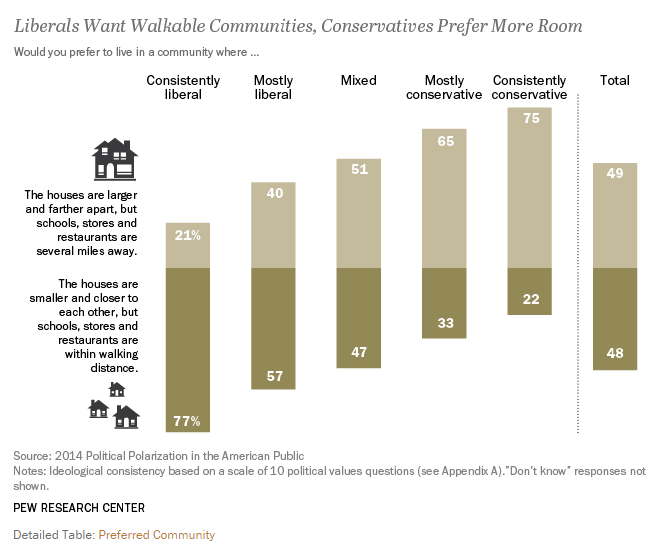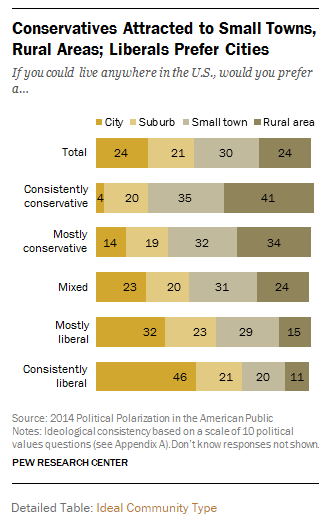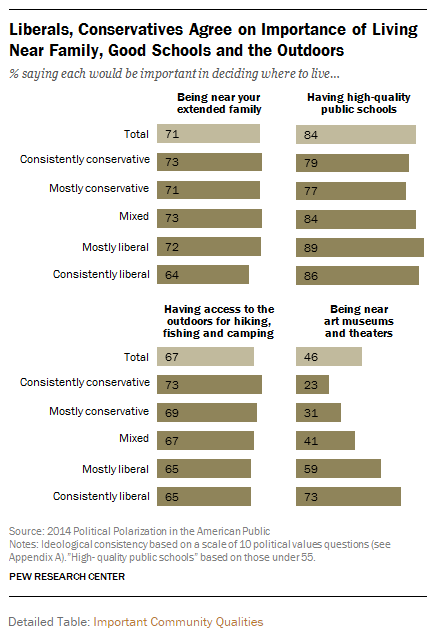Urban planning is a partisan issue. The graph below, produced by the Pew Research Center, shows that the American public is evenly split between preferring small, walkable communities (48 percent) and sprawling suburbs with McMansions (49 percent), but that split is strongly partisan.
Seventy-seven percent of consistent liberals want to live in neighborhoods where “the houses are smaller and closer to each other, but schools, stores, and restaurants are within walking distance.” In contrast, 75 percent of consistent conservatives prefer it when “houses are larger and farther apart, but schools, stores, and restaurants are several miles away.”

Relatedly, Americans are about evenly split between those who prefer to live in cities, suburbs, small towns, and rural areas, but there is a clear partisan divide.

And everyone seems to agree that they want to be near family, good schools, and the outdoors, but liberals are significantly more likely to care if they’re near art museums and theaters.

I’m familiar with the idea of the urban liberal and the rural conservative, but I’m still surprised by the strength of these correlations. If the preferences hold true in real life, it means that there is significant partisan residential segregation. That would translate into fewer friendships between people on different sides of the political spectrum, fewer conversations that help them see the others’ point of view, and more cross-group animosity.
In fact, that’s exactly what we see: a strongly partisan population that doesn’t talk to each other very much.
This post originally appeared on Sociological Images, a Pacific Standard partner site, as “Republicans to Democrats: Keep Your Walkable Communities!”





